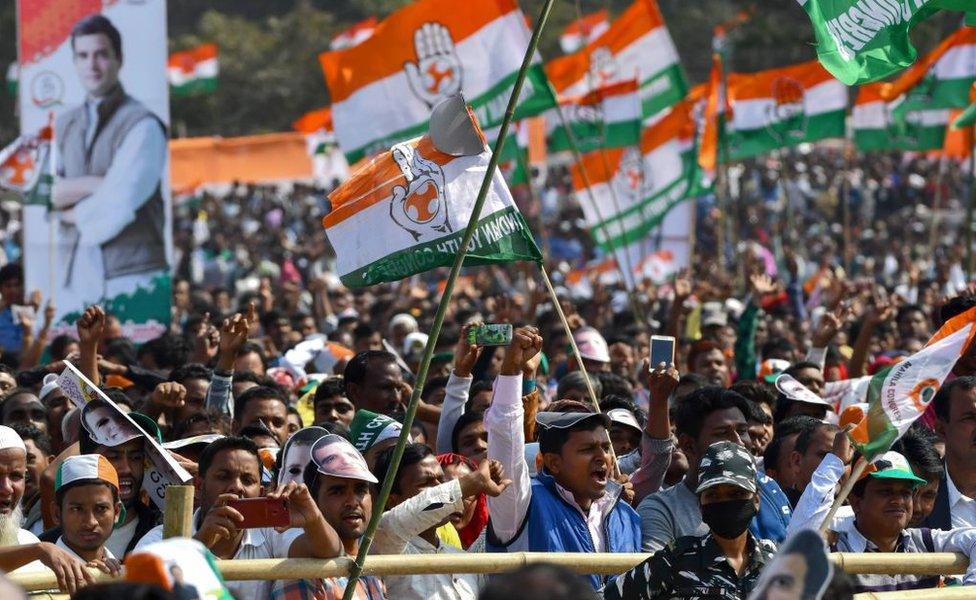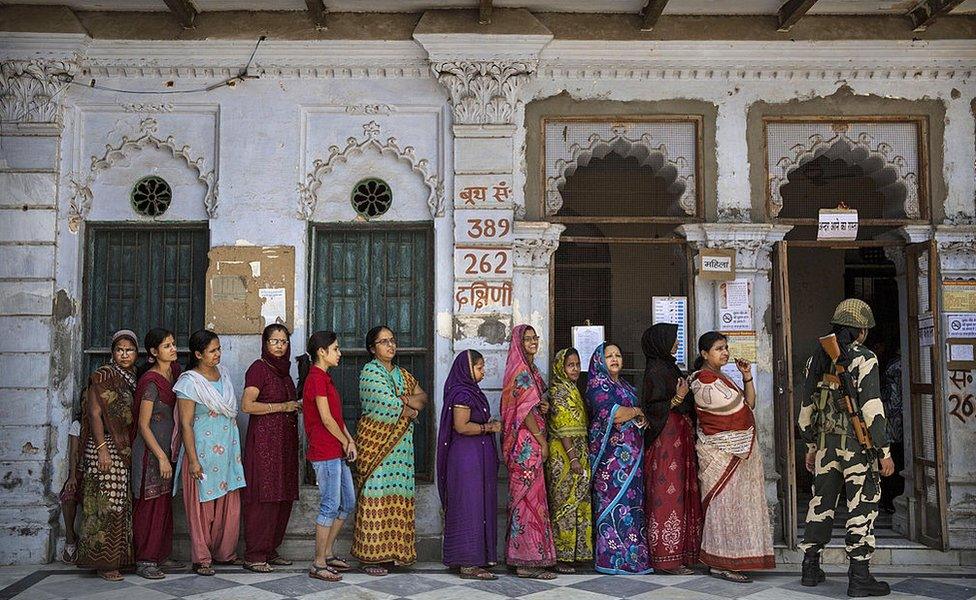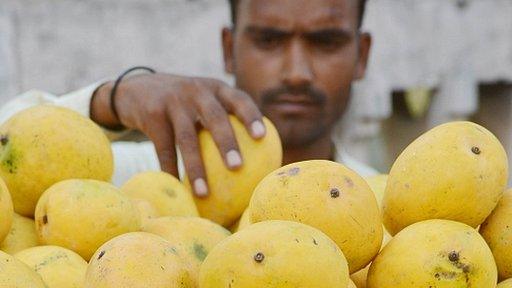Lok Sabha election 2019: When do you have to vote?
- Published
What do India's voters want?
India's general election will take place in seven phases over two months, from 11 April to 19 May.
With 900 million eligible voters, it will be the largest election the world has seen.
The lower house has 543 elected seats and any party or coalition needs a minimum of 272 MPs to form a government.
The ruling Bharatiya Janata Party (BJP) faces challenges from strong regional parties and a resurgent Congress.
Mr Modi led the BJP to its greatest victory in 2014, while Rahul Gandhi was the face of Congress when it suffered its worst defeat.
Allow X content?
This article contains content provided by X. We ask for your permission before anything is loaded, as they may be using cookies and other technologies. You may want to read X’s cookie policy, external and privacy policy, external before accepting. To view this content choose ‘accept and continue’.
The BJP won 282 seats of the 428 it contested - it was the first time since 1984 that a party had won an absolute majority in a general election.
Analysts believe the summer elections will largely be a referendum on Mr Modi, who remains the BJP's main vote-getter.

The Congress party, led by Rahul Gandhi, is hoping to make a comeback
The opposition campaign will be entirely targeted at the prime minister, a polarising leader who is loved and loathed in equal measure.
When does each state go to the polls?
The dates on which voting will be held are 11 April, 18 April, 23 April, 29 April, 6 May, 12 May and 19 May.
Polling in some states, such as Tamil Nadu and Andhra Pradesh, will happen in one day. But other states, such as Uttar Pradesh, will hold polls in several phases.
Votes will be counted on 23 May.

Phase 1 - 11 April
Andhra Pradesh, Arunachal Pradesh, Assam, Bihar, Chhattisgarh, Jammu and Kashmir, Maharashtra, Manipur, Meghalaya, Mizoram, Nagaland, Odisha, Sikkim, Telangana, Tripura, Uttar Pradesh, Uttarakhand, West Bengal, Andaman and Nicobar islands, Lakshwadeep
Phase 2 - 18 April
Assam, Bihar, Chhattisgarh, Jammu and Kashmir, Karnataka, Maharashta, Manipur, Odisha, Tamil Nadu, Tripura, Uttar Pradesh, West Bengal, Pondicherry
Phase 3 - 23 April
Assam, Bihar, Chhattisgarh, Gujarat, Goa, Jammu and Kashmir, Karnataka, Kerala, Maharashtra, Odisha, Uttar Pradesh, West Bengal, Dadra and Nagar Haveli, Daman and Diu

More Indian women are likely to vote than men in this election.
Phase 4 - 29 April
Bihar, Jammu and Kashmir, Jharkhand, Madhya Pradesh, Maharashtra, Odisha, Rajasthan, Uttar Pradesh, West Bengal
Phase 5 - 6 May
Bihar, Jammu and Kashmir, Jharkhand, Madhya Pradesh, Rajasthan, Uttar Pradesh, West Bengal
Phase 6 - 12 May
Bihar, Haryana, Jharkhand, Madhya Pradesh, Uttar Pradesh, West Bengal, Delhi
Phase 7 - 19 May
Bihar, Jharkhand, Madhya Pradesh, Punjab, West Bengal, Chandigarh, Uttar Pradesh, Himachal Pradesh

Read more about the Indian election here.
- Published6 March 2019
- Published29 January 2019
- Published11 March 2019

- Published10 April 2019